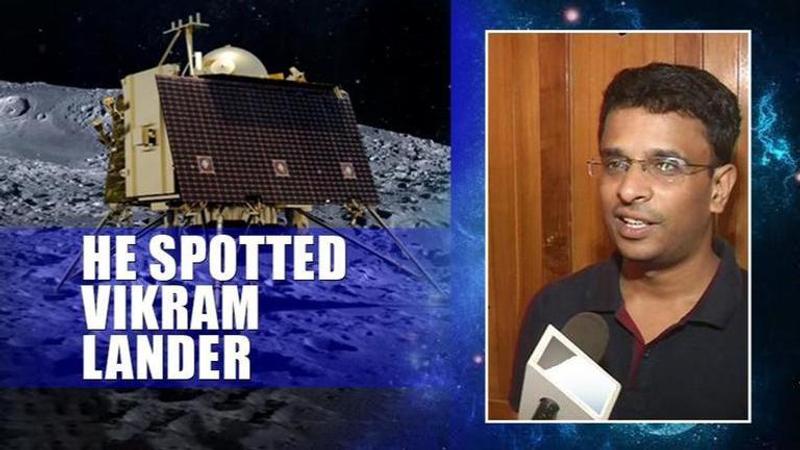Published 11:39 IST, December 3rd 2019
Chandrayaan 2: Before NASA, Indian techie spotted lost Vikram lander on lunar surface
Hours after NASA spotted Vikram lander of Chandrayaan 2 on lunar surface, it was revealed that findings were first observed by an Indian techie from Chennai

Hours after NASA spotted Vikram lander of Chandrayaan 2 on lunar surface, it was revealed that the findings were first observed by an Indian techie and space enthusiast Shanmuga Subramanian. The Lunar Reconnaissance Orbiter Camera team released the first mosaic (acquired September 17) of the site on September 26 and many people downloaded the mosaic to search for signs of the Vikram lander. Among them was Shanmuga Subramanian who contacted the LRO project with positive identification of debris. After receiving this tip, the LROC team confirmed the identification by comparing before and after images. The NASA team in its image also credited Subramanian for the findings.
Speaking to news agency ANI, he said: "I was able to find something out of the ordinary in a particular spot, so, I thought this must be the debris. I got confirmation from NASA today."
Two subsequent image sequences were acquired on October 14 and 15, and then on November 11. The LROC team scoured the surrounding area in these new mosaics and found the impact site and associated debris field. The November mosaic had the best pixel scale (0.7 metre) and lighting conditions (72° incidence angle). The debris first located by Shanmuga is about 750 meters northwest of the main crash site and was a single bright pixel identification in that first mosaic (1.3-metre pixels, 84° incidence angle). The November mosaic showed best the impact crater, ray, and extensive debris field. The three largest pieces of debris are each about 2x2 pixels and cast a one-pixel shadow.
NASA tweets about the findings
The image tweeted by NASA shows the Vikram Lander impact point and associated debris field. Green dots indicate spacecraft debris (confirmed or likely). Blue dots locate disturbed soil, likely were small bits of the spacecraft churned up the regolith. "S" indicates debris identified by Shanmuga Subramanian.
Updated 12:32 IST, December 3rd 2019




